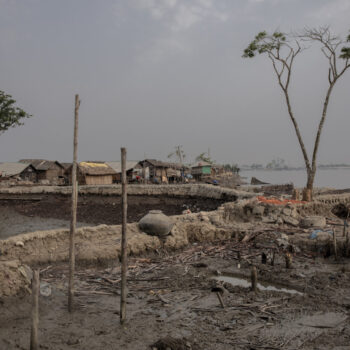Leaders around the world have recently agreed the Sustainable Development Goals, which are intended to guide us towards a common agenda to end poverty and direct us on a growth path that secures healthy economies, fairer societies and a thriving environment. In addition, a new universal agreement to tackle climate change and build resilience is expected to be signed this December in Paris. Momentum has been increasing to cement an ambitious agreement in which parties commit to putting in place actions which keep global temperature below 2°C and adapt to the changes we can no longer avoid.
Paris should accelerate the pace and scale in which countries move towards a profound transformation for the decarbonization of our economies. Until today 155 parties have submitted their national commitments, known as INDCs, setting their own targets for mitigation as well as adaptation. This is unprecedented and is marking how the climate action discussion is framed both internationally and nationally.
Both the SDGs and the INDCs, as a base for Paris, are major international commitments that should foster collaboration across nations to tackle the 21st century challenges we face. However, as the international scene advances in these discussions the question is shifting to how to translate them into action on the ground aligning them with country priorities and contexts. Both the climate and development agenda are closely linked but ensuring these agendas go hand-in-hand in the implementation and reinforce each other is an issue few have tackled. It’s to this challenge that the Colombian government is working to respond.
When vulnerabilities and opportunities meet
In Colombia within the rural population 44.1% of the people live in a multidimensional poverty situation, making renovating rural development a national priority. In addition, agriculture and livestock is responsible for the greatest share of GHG emissions and is also the most vulnerable economic activity in terms of climate change, thereby exposing rural communities which in turn can increase social breaches and make it even more difficult to overcome poverty and build peace. The Colombian Government has understood, as indicated in its INDC, that mitigation and adaptation to climate change have the potential to facilitate the consolidation of peace territories in a more equitable manner, particularly in rural areas.
This context pointed to an area of both risk and opportunity where international commitments can be translated to action creating true value for the local communities, economy and environment. The Government of Colombia, together with the Inter-American Development Bank (IDB), is trying to answer this challenge, and should launch a sustainable development plan during COP21 in order to target these interlinked problematic in rural areas. So far, high level leadership has been driving a process in which it is recognised that the transformational results required won’t be achieved following traditional siloed sectored and territorial action. A deeper change in the way key stockholders interact will be needed to encourage a new level of coordination from planning to implementation, thus aligning international, national and sub-national investments towards a common objective. This might be easier said than done, but Colombia is planning to bring on the action.
Transformational change?
Shifting from business as usual to a sustainable agenda for development requires deep structural changes. E3G has been supporting the government in the development of this plan based on a model of transformational sustainable development pathways, through the Inter-American Development Bank.
E3G’s experience tells us that transformation needs to happen on multiple levels – reflecting the complexity of delivering low carbon, climate resilient investment. Transformation requires having sufficient ambition to avoid lock-in of traditional high carbon investment practices; scope to drive fundamental sectoral change (rather than bolting on ‘climate proofing’ to existing development models); and capacity to capture results, learning and replication that can be use to inform other investment processes and reform agendas so as to avoid ‘reinventing the wheel’ elsewhere.
However, these elements of an approach alone won’t drive transformational change with long-lasting impact. A more systemic approach is needed to leverage financial resources, enable fair and effective risk sharing within public- private sector, deliver market reforms and catalyse synergies amongst sectors and actors to align clear long-term polices. Lastly but not least, an investable project portfolio is also needed to bring the initiative to life, an issue that has proven to be a challenge in Colombia’s wider experience.
International agendas matter to national action
International agreements might seem far from the action on the ground but the Sustainable Development Goals and the expected Climate Agreement are already shaping national action. Joint commitments and international support do help spur action at home, however each nation will need to find its own answers in line with the national context, and drive the change on the ground. Colombia’s upcoming plans and subsequent experiences are yet another reason to look forward to COP21 in Paris, as these could contribute to help us advance in implementing effectively and jointly sustainable, low carbon and climate resilience development.


